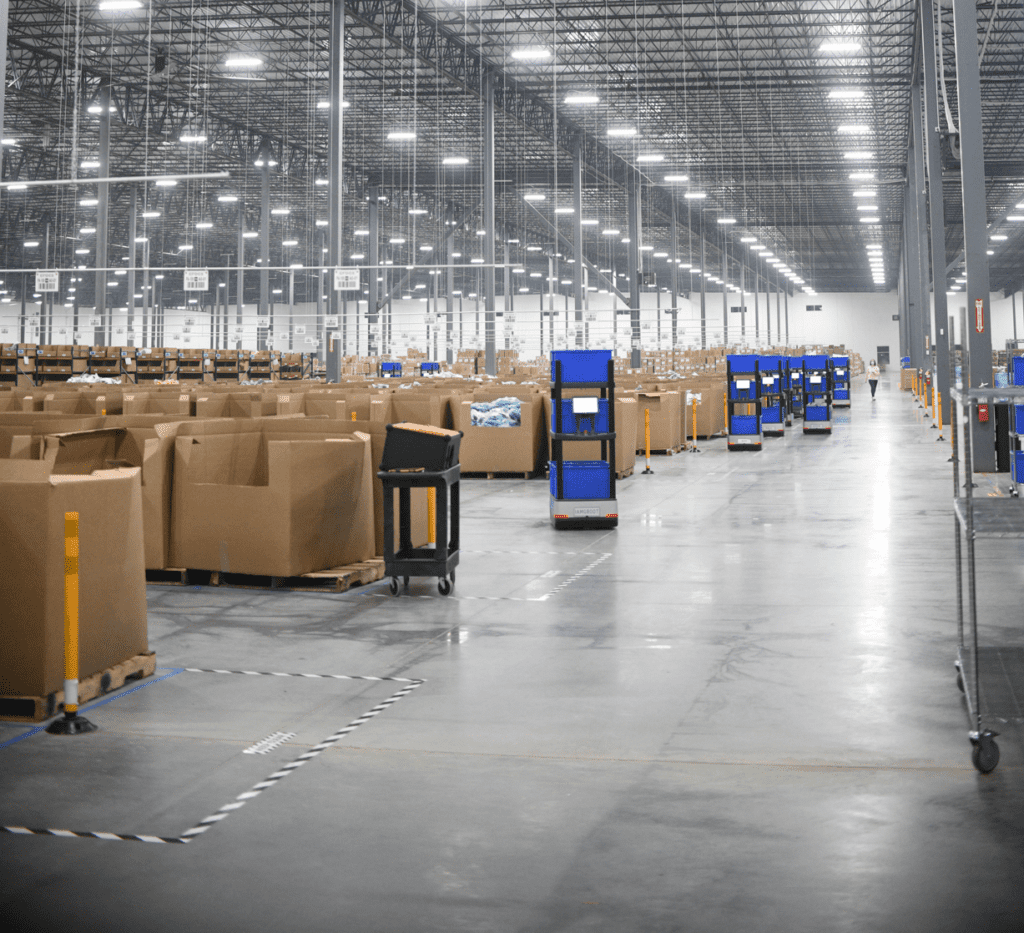
Efficient, streamlined logistics operations play a critical role in meeting consumer demand, increasing customer satisfaction and ultimately, reducing operational costs. In today’s competitive retail sector, optimizing logistics processes enables retailers to gain an advantage. In this article, we’ll discuss four ways to improve retail logistics to reduce operational savings, including:
- Implement resilient strategies
- Outsource to trusted third-party providers
- Leverage the right tools and technology
- Using predictive analytics
We’ll discuss these ideas in more detail later in this article, but first, let’s take a look at the challenges faced by retailers.
Retailers must adapt to changing conditions
Retailers must be flexible in order to handle consumer’s evolving shopping behaviors changing trade policies, inventory shortages, supply and demand disruptions and unpredictable delays in last mile deliveries. All of these challenges negatively impact bottom lines, credibility, long-term viability and market reach of affected brands.
To resolve these challenges, retain their competitive edge, grow their consumer base and operational savings, business owners are rethinking logistics processes and leveraging innovative solutions to bring their e-commerce and retail operations into the digital age. However, this is no walk in the park.
A viable solution pathway involves a reassessment of inefficient supply chains, existing legacy systems, traditional inventory management and fulfillment processes. More importantly, it requires retailers to review their retail logistics processes and take proactive measures to improve and streamline existing operational workflows.
Global marketplaces are dominated by brands that are proactive about driving operational efficiencies within their retail logistics workflows. Let’s discuss four ways to improve retail logistics and reduce operational costs.
1. Implement resilient strategies
The ripple effect of global bottlenecks, labor shortages and geopolitical conflict is driving the current climate of persistent unpredictability. It is the time for retailers to build flexibility and resilience into their retail logistics strategies and supply chains. Retail logistics resilience goes beyond the ability to wait out and survive disruptions. It entails having a logistics strategy that can pivot when necessary to handle unpredictable challenges.
Such a strategy focuses on risk diversification, increased consistency and the surplus availability of high-priority SKUs. It also includes the ability to quickly change fulfillment workflows when one or more bottlenecks surface. However, such resilience can only be achieved by collecting and analyzing real-time logistics data to facilitate end-to-end visibility and streamline retail logistics activities.
2. Outsource to trusted third-party providers
Outsourcing to providers with current retail logistics expertise can reduce costs, increase productivity and deliver a competitive edge to retail outlets and e-commerce stores. Top providers have the technology, domain expertise, infrastructure and time-tested strategies to design, implement and maintain a robust retail logistics framework for a retailer’s unique use case. This is advantageous for brands that have grown to the point where in-house fulfillment has become costly, time-consuming and inefficient.
Outsourcing frees up retailers to focus on strategic initiatives that drive revenue, customer satisfaction, business growth, product development and service differentiation. The best 3PLs enable businesses to easily expand into global markets by providing regional expertise (such as applicable laws and regulations in other countries), infrastructure (such as distribution centers) and established global shipping resources (such as air freight and sea freight). They also negotiate bulk carrier discounts to reduce delivery costs and time, enabling retailers to offer faster, affordable shipping to customers.
3. Leverage the right tools and technology
Aligning frontend customer journey touchpoints with inventory/warehousing backend operations is key to building a robust retail logistics strategy. Optimizing all inbound and outbound retail logistics activities to meet shoppers’ expectations around speedy, affordable delivery and easy returns processes requires investment in supply chain technology, infrastructure and employees who understand retail logistics best practices.
Leveraging robotics, automation solutions, demand planning systems, inventory management, logistics management and ERP software can help automate warehouse/fulfillment operations and gain a 360-degree view of all fulfillment activities. These tools can also help companies adapt their retail logistics strategy and optimize retail supply chains for omnichannel fulfillment and hybrid markets.
For example, Crocs’ ecommerce volume grew substantially in 2020. After implementing a new pop-up warehouse specifically for ecommerce fulfillment to meet demand, Crocs brought 83 Chucks (32 of which were for the holiday peak) into its operation.
The new warehouse ramped up from the first pick to full volume in just two days. Within the fourth quarter of 2020, Crocs’ warehouse associates:
- Picked about 3 million units
- Increased throughput by 182%
- Exceeded designed rates by 25%
Because associates no longer had to operate manual carts, their walking time was reduced by half. Training time was also decreased from one week to just one day, saving the company 32 hours of training time for every new associate.
4. Use predictive analytics
Predictive analytics help operations anticipate shifts in demand and supply, consumer trends, and potential risks. They can also provide insights around bottlenecks in the logistics process and make intelligent sales forecasts by analyzing historical and real-time logistics data. With this insight and forecasts, online retailers can better address supply and demand miscalculations and anticipate how factors (such as weather) may disrupt shipping schedules.
Predictive analytics can inform sales forecasting by using logistics data to understand consumer demands, identify turnover during different seasons and promotional periods, and track sales patterns/trends.
Other ways to improve retail logistics
The strategies above aren’t the only ways to improve retail logistics. Other improvements include:
- Adopting sustainable practices for last mile delivery and reverse logistics
- Investing in inventory and warehouse management solutions
- Strengthening backend admin management for retail logistics
- Reviewing, measuring, and analyzing retail KPIs
- Incorporate newer AI and automation technologies
- Reorganize procurement, fulfillment and shipping activities for omnichannel sales
Looking ahead
Regardless of your niche, consumer demographics or sales channels, these four strategies can help you reduce operating costs, improve efficiency and meet customer expectations. Retailers and logistics companies should leverage AMRs, data analytics, automation solutions, embedded integration technology and current trends impacting retail logistics to improve processes, boost performance and increase their competitive edge.


